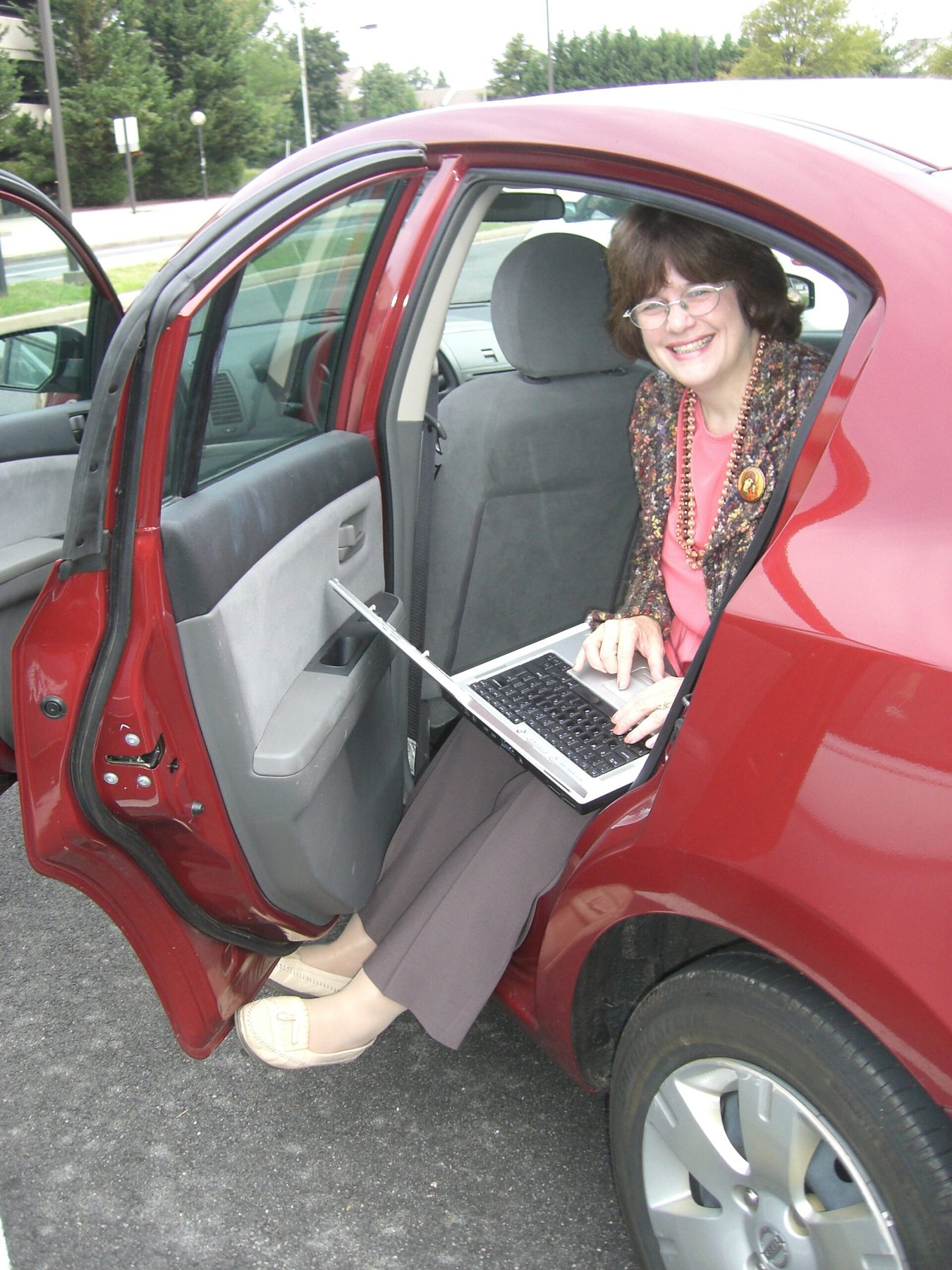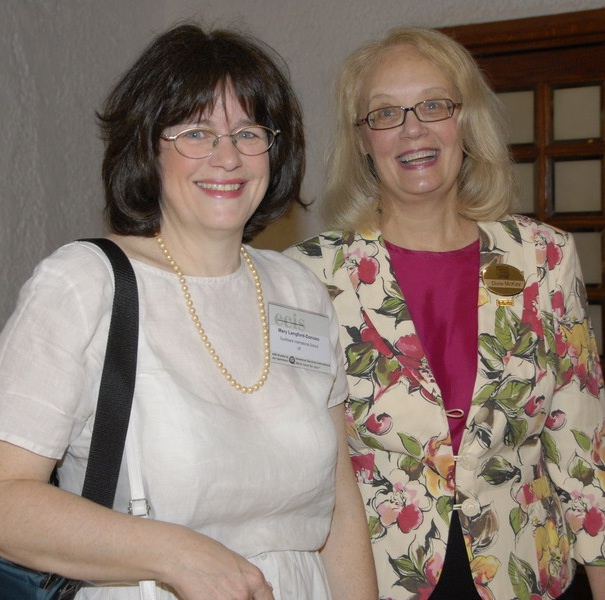IAB: You have worked at a lot of different schools over the years, Mary. Can you share some of the insights you have gained from them?
ML: At Hampstead International School (HIS) I learned how people of different cultural backgrounds have such different expectations. I also began to understand the variety of reasons that can lead families to relocate: corporate relocations, political exile, independent wealth, local families with a more global outlook, celebrity status in theater or in the movie industry, and even royalty, to name just a few! Families presented an application, school reports (if they had them, that is if they were not ‘in the shipment’) and met with Edna Murphy or me, and we just worked out whether we could meet their needs. It was mostly based on ‘instinct’.
The American School In Switzerland (TASIS), which includes schools in England (where I was based), France and Switzerland was the first US-style boarding school in Europe and that made it unique. TASIS had not yet introduced the IB and this presented real challenges when we tried to attract European students who were more interested in British universities than American ones. Through TASIS’s excellent alumni program, I learned how well a hand-in-glove relationship between marketing, alumni and admissions can really enhance recruitment. TASIS also encouraged me to network and I became involved with the American Women’s Club, the US-UK Chamber of Commerce.
Southbank was considered the ‘safe school’ where students could go if they were not admitted to some of the other schools. While facilities were not as impressive as those of the competition, the IB results were strong, and the caliber of the teaching staff was amazing.

I revamped my ‘pitch’ to focus on the faculty and programs, not the ‘bricks and mortar’. Like at HIS, Southbank was very international, and with our waiting lists, I began to experience the ‘offer of funds’ to accept students from parents of some cultures!
Dwight was a more typical international school but had a British independent school legacy and thus a high proportion of ‘local’ families. The main challenge at Dwight was that it had changed names three times (Woodside Park International School, North London International School, and Dwight School London) while I was in London, and before that was founded as the Dwight Franklin School in Camden Town. Name changes wreak havoc on branding and name recognition, and it is challenging to build up the ‘word of mouth’ name recognition when it changes every dozen years!
IAB: What are some of the important, broad changes in the field that you have observed over the years?
ML: First of all, over time, what was a stronghold of ‘American overseas schools’ became ‘American international schools’ and then ‘International schools’. Case in point: When I lived in Belgium in the 1950s, the ‘school in the chateau’ was the American School of Brussels. Now, 60 years later, it is the International School of Brussels. This has happened all over the world.
The nature of the services for expats has also changed. When I started my career, expat families had to manage the moves themselves, unless their Human Resources department provided some guidance. The American Community School (now ACS International), my first school, had the clever idea of offering a service to meet families at the airport and take them to see houses that were accessible to the campuses. There were no ‘relocation’ services in those days and the owners of the school calculated that if they offered this convenient (and complimentary) service to prospective families, and helped them secure homes near the school, they would enroll their children. Then admissions people began to reach out to the corporate HR departments to discuss the international school available to attract the new inbound families.

Now the corporate HR of the ‘experienced’ international companies outsource this to global mobility services, who may even then outsource it further to relocation companies who then may outsource to education consultants. So with all of these actors involved, it is not always easy to know who has the ‘ear’ of the prospective family and what it is they are communicating to them. The days when families could pick up a school’s prospectus in the company headquarters and read about the school are long gone.
Another big change has been the speed of the ‘turnaround’. Back in the day, I would receive an inquiry by letter (or possibly a long distance phone call) asking about the school, for a prospectus, possible places, etc. often 7-9 months ahead of the transfer. I would respond (on my IBM golfball typewriter!), and know that it would be at least 10-14 days before I would receive a reply from an overseas family. Now, with internet and online forms, an enrollment can take within as little as 48 hours! Companies move people at much shorter notice, too, which makes so many of those known ‘cycle of culture shock’ diagrams obsolete. There is not the same amount of time to plan for those ‘healthy goodbyes’, and new students join at any time. Whereas at one time companies seemed to try to work around the ‘move for September and the start of school’ model, now it’s ‘we need you there yesterday!’

The other big change I have observed has been the huge growth in schools owned by for-profit equity companies. On a personal level, almost all of the schools I worked at were for profit but I never felt the for-profit motive take away from the core goal of finding families who fit with the school’s mission. That being said, when I look at for-profit schools now, though there is reassurance that ‘nothing will change’ it does seem that more of the work is centralized, removing some of the individualized ‘customer service’ that has characterized many international schools, and many do question whether the profit motive overrides other considerations in the admissions process.
IAB: Based on your experience, what do you think is most important for admissions professionals to consider as they serve families?
ML: The longer I work in this field, the more I think that the admissions process in international schools needs to be very personalized. I recently did some research for my doctorate comparing admissions policies for IB schools, and it was clear that for international families, a less ‘flexible’ method is challenging. With families coming from so many different language and cultural backgrounds, different school systems with different pedagogical methods and content, assessment methods, and arriving at different times of the year, one must be prepared to adapt to their individual needs. Families also have different degrees of ‘international school experience’; some are seasoned expats with a good understanding of international schools, yet there are also those moving for the first time who need more support and guidance. An understanding of and empathy for the individual family, student and circumstances is essential, and what I think differentiates international schools from many ‘local’ schools.


I also think in a truly international school, it is very useful for the admissions staff to have some understanding of language learning and second language learners. We get so many applications from students and families who are not fully proficient in English and it helps to understand their perspectives, and the challenges they may face with their understanding of what our schools have to offer, and the admissions process itself.
It’s also important never to forget that you never know it all. I have had to keep learning - about cultures, languages, countries, ways of doing things, and human nature - for my entire career.
IAB: You worked through the first full year of the pandemic. Tell us about your experience.
ML: First of all, international schools were generally ahead of the curve. With our international networks, international school professionals were generally aware of what was already going on in different parts of the world (starting in Asia, of course) in terms of what was coming. Some of us even recall the SARS pandemic and drew on that experience. International schools tend to have an ‘early warning alarm’ mechanism as word spreads across our network about global situations.
Secondly, I think international schools have been more proactive about embracing technology, from the admissions office to the classroom, so the switch to remote learning via devices was not as traumatic as it was for some schools that are less so. I know that many international school IT teams were doing a lot to help support students and families with the home-computer setup.
In terms of admissions, the general comments from colleagues has been that it was a sort of ‘great leveler’. Any ‘pretension’ on the part of the prospective family or schools sort of evaporates when you are communicating in your kitchen, dressed from the Zoom line and up. So it made conversations in a strange way a bit more authentic. The other interesting conversation was about the nature of the admissions ‘visit’. Some international schools have ‘to die for’ enviable facilities that are obviously an impressive part of the visitor experience. Other schools are in converted adapted buildings with much less impressive facilities, but their teachers and programme can nonetheless be second to none. Suddenly, the dazzling school facilities were much less of a feature, unless schools had or were able to produce virtual tours. This meant that parents might be selecting schools and making decisions on the basis of criteria other than ‘facilities’.
IAB: Congratulations on your retirement, Mary. You are keeping busy with your PhD and your consultancy work. Can you tell us a little about your PhD?
ML: As I have now ‘retired from my day job’ I have time to think about what I write; all three papers have been about the IB: how parents value its mission, how IBDP teachers embed the IB Learner Profile in their teaching, and comparison of admissions policies in two contrasting IB schools - an English prep school and an international school. My professor has suggested I should do the dissertation on the subject of international school admissions. But, seriously, one reason I wanted to do this was because I think I have a lot of experience and insights about international schools and international education, and it seems people pay more attention to what you have to say or write if you have some letters after your name. I have to finish by my 70th birthday!
IAB: Thank you for the interview and best of luck Mary!



